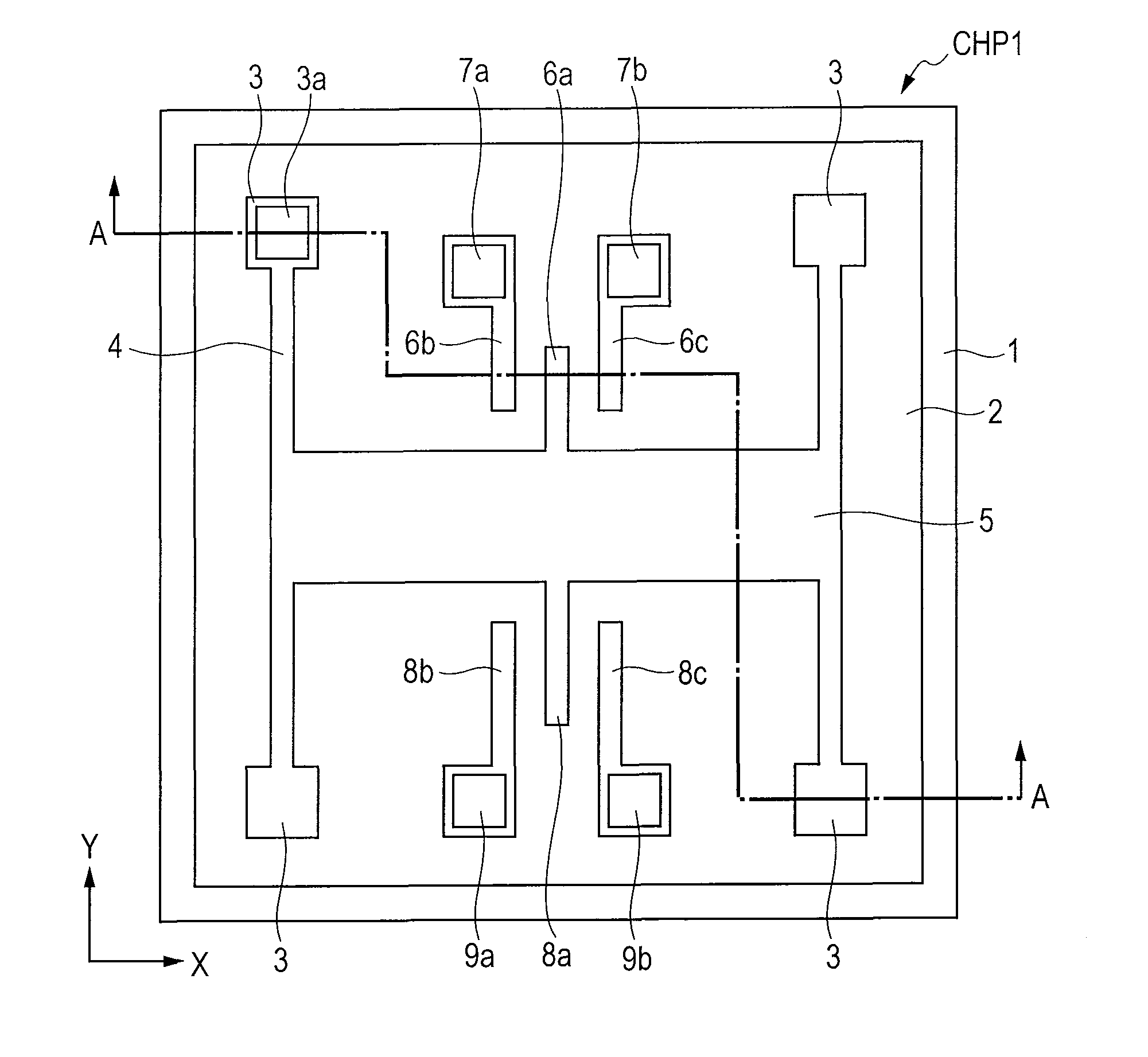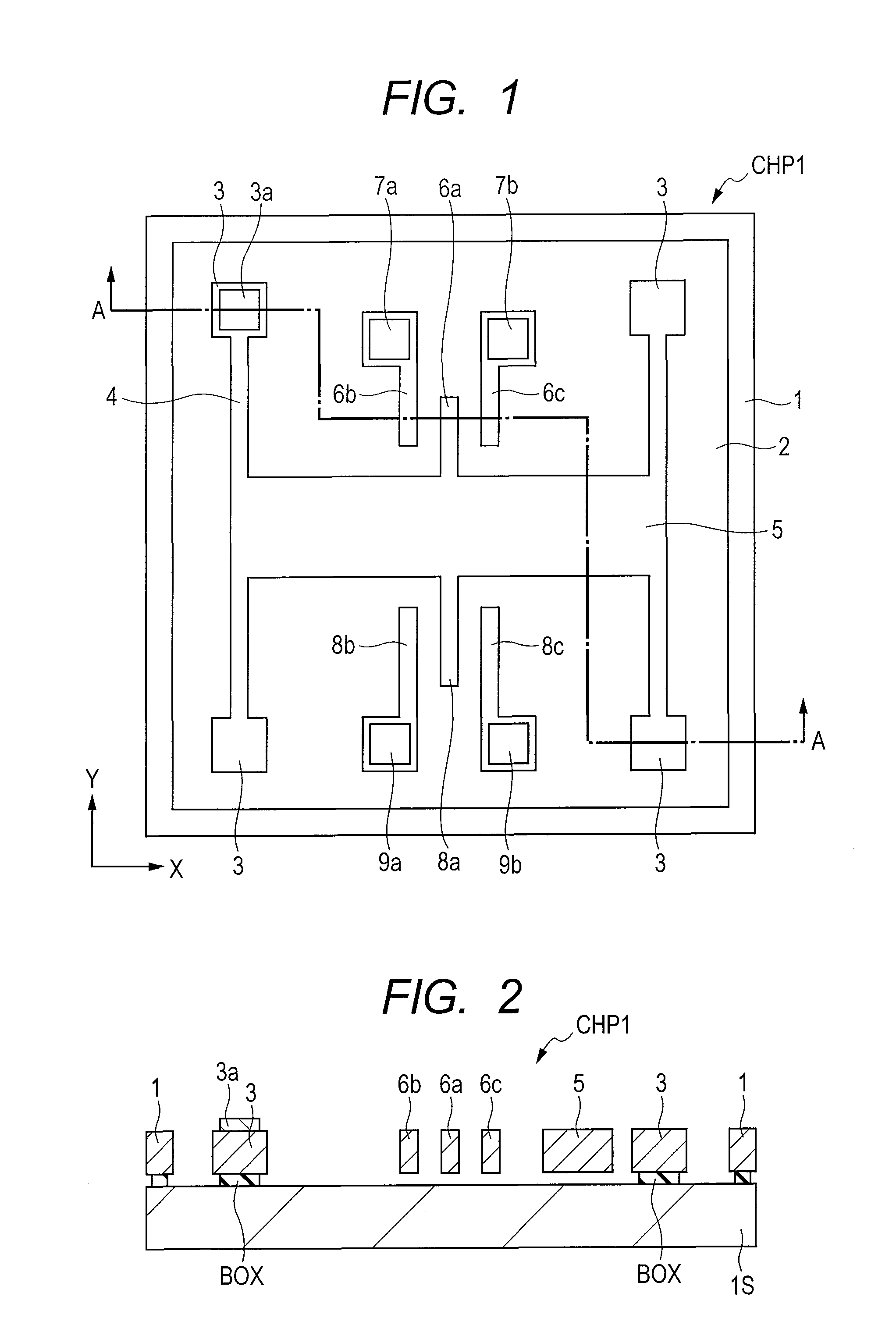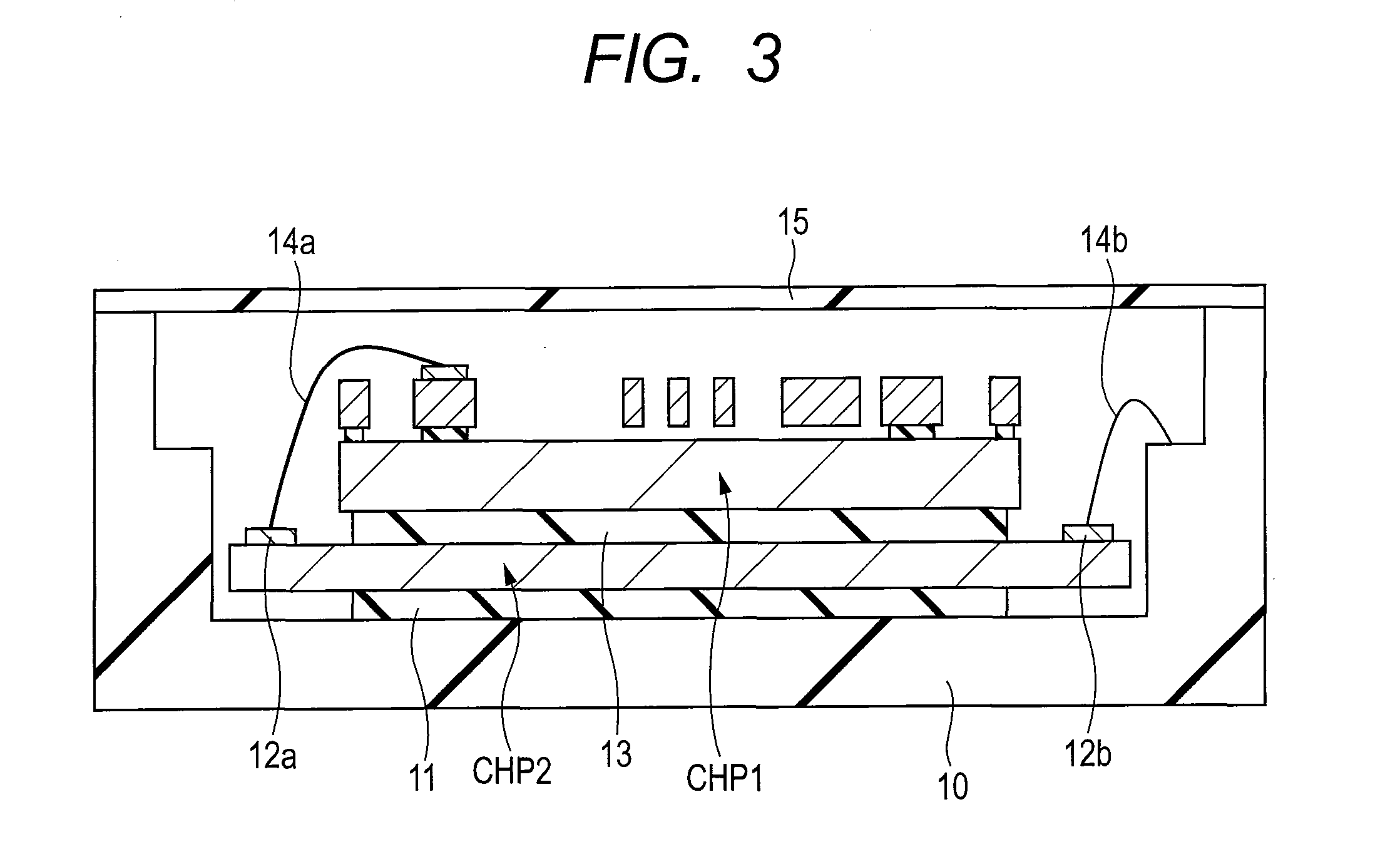Capacitance Sensor
a technology of capacitive sensors and sensors, applied in the direction of acceleration measurement using interia forces, resistance/reactance/impedence, instruments, etc., can solve the problem that failure cannot be detected immediately
- Summary
- Abstract
- Description
- Claims
- Application Information
AI Technical Summary
Benefits of technology
Problems solved by technology
Method used
Image
Examples
first embodiment
[0038]A MEMS sensor (capacitance sensor) according to a first embodiment will be described with reference to the accompanying drawings. In the first embodiment, an acceleration sensor will be described as one example of the MEMS sensor. FIG. 1 is a plan view illustrating a structure configuring the acceleration sensor formed on a semiconductor chip CHP1. As illustrated in FIG. 1, a frame part 1 is formed in the semiconductor chip CHP1, and a cavity part 2 is formed to be surrounded by the frame part 1. Fixed parts 3 are disposed inside the cavity part 2, and beams (elastic deformation parts) 4 are connected to the corresponding fixed parts 3. The beams 4 are connected with a movable part 5 which forms a weight of the acceleration sensor. That is, the fixed parts 3 and the movable part 5 are connected by the elastically deformable beams 4, and the movable part 5 can be displaced in an X-direction of FIG. 1.
[0039]The movable part 5 is formed with a detection movable electrode 6a forme...
second embodiment
[0094]An acceleration sensor according to a second embodiment will be described with reference to the accompanying drawings. FIG. 6 is a diagram illustrating the configuration of the acceleration sensor according to the second embodiment. Hereinafter, the feature of the acceleration sensor according to the second embodiment will be described, and the repetitive description of the first embodiment will be omitted.
[0095]As illustrated in FIG. 6, the feature of the acceleration sensor according to the second embodiment resides in that a high-pass filter HPF1 is disposed before the second synchronous detection unit SDU. For example, when no high-pass filter HPF1 is provided, the signals output from the first synchronous detection unit FDU include the diagnostic signal of several hundreds Hz and the voltage signal of DC to several tens Hz. Those signals are inputted to the second synchronous detection unit SDU. In the second synchronous detection unit SDU, the diagnostic signal of severa...
third embodiment
[0098]An acceleration sensor according to a third embodiment will be described with reference to the accompanying drawings. FIG. 7 is a diagram illustrating the configuration of the acceleration sensor according to the third embodiment. Hereinafter, the feature of the acceleration sensor according to the third embodiment will be described, and the repetitive description of the first embodiment will be omitted.
[0099]As illustrated in FIG. 7, the feature of the acceleration sensor according to the third embodiment resides in that not the low-pass filter LPF2 but a high-pass filter HPF2 is disposed after the second synchronous detection unit SDU. As described above, the diagnostic signal of several hundreds Hz passes through the second synchronous detection unit SDU, and is transformed into a signal of twice (cos 2wt) the frequency of the diagnostic signal, and a DC signal (cos 0). In the first embodiment, the low-pass filter LPF2 is used to extract the D signal (cos 0) for conducting ...
PUM
 Login to View More
Login to View More Abstract
Description
Claims
Application Information
 Login to View More
Login to View More - R&D
- Intellectual Property
- Life Sciences
- Materials
- Tech Scout
- Unparalleled Data Quality
- Higher Quality Content
- 60% Fewer Hallucinations
Browse by: Latest US Patents, China's latest patents, Technical Efficacy Thesaurus, Application Domain, Technology Topic, Popular Technical Reports.
© 2025 PatSnap. All rights reserved.Legal|Privacy policy|Modern Slavery Act Transparency Statement|Sitemap|About US| Contact US: help@patsnap.com



